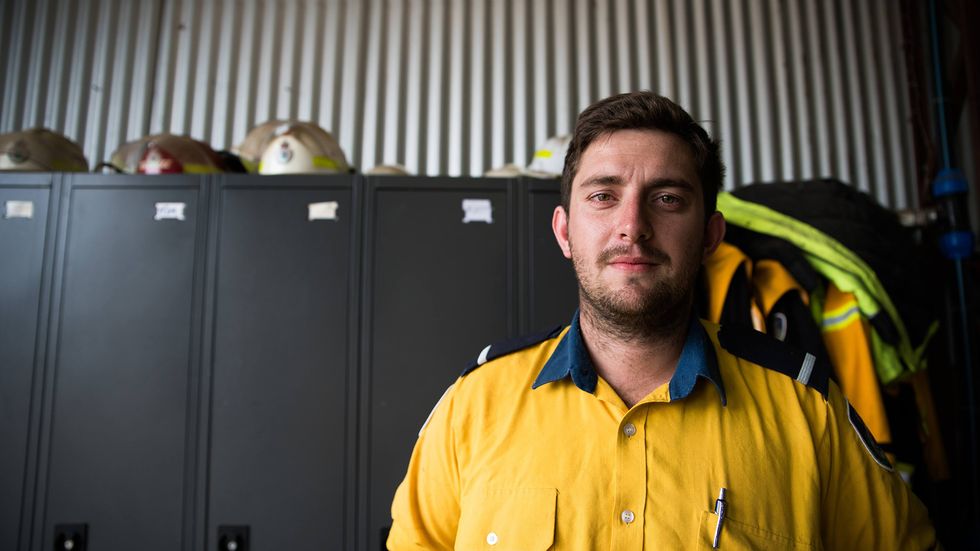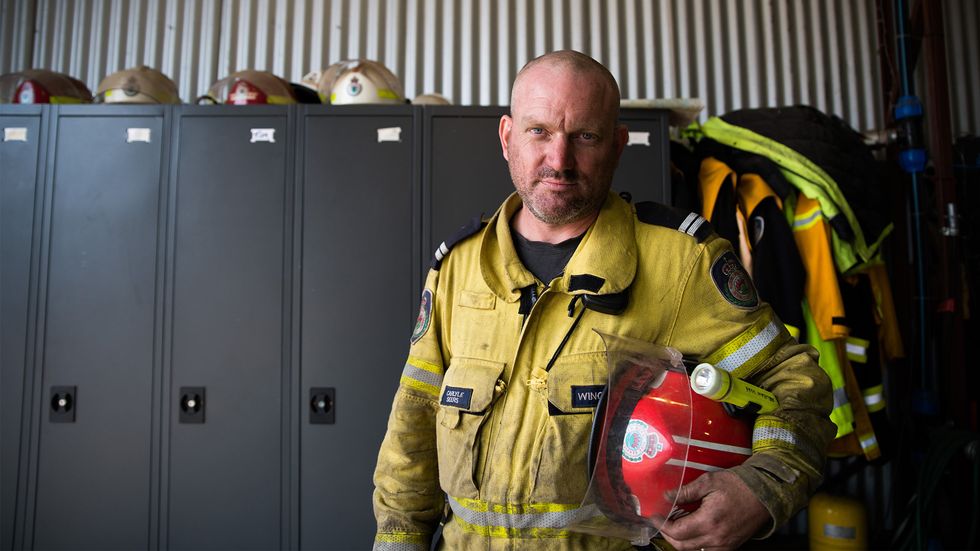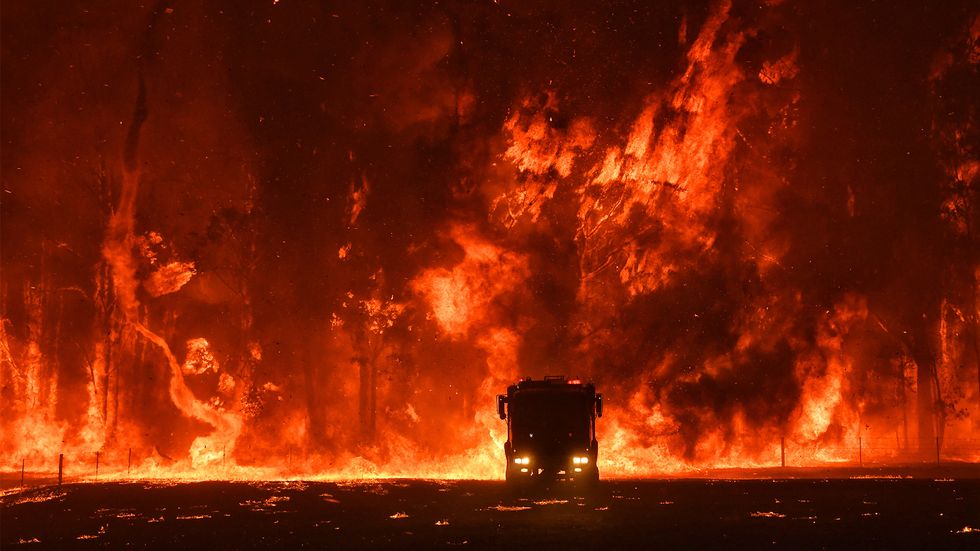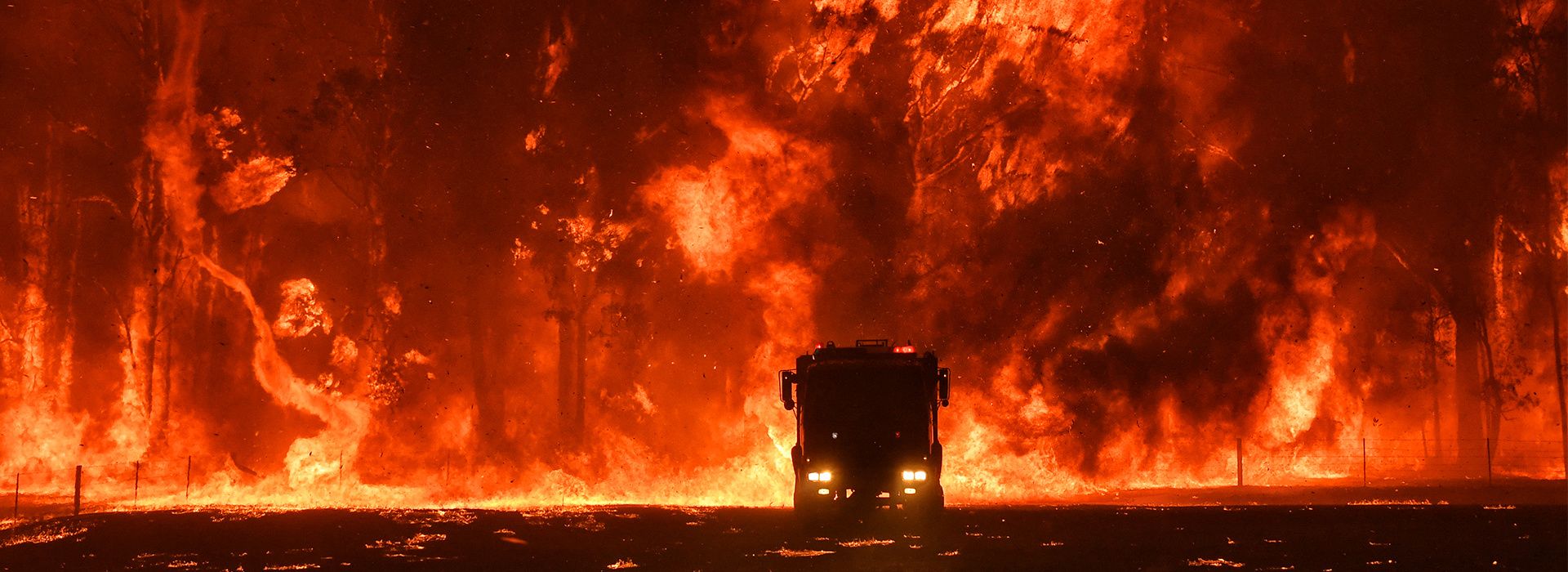Click through to Best of 2020 to discover the Newsworthy articles with greatest impact: whether by highest page views, social media engagement or reportage on important social issues.
As the nation burned over this Black Summer, thousands of words were written about the bushfire season that never ended – but it is the images that remain seared in our rattled collective psyche.
Once upon a time, some hard heads in the traditional media industry saw photojournalism as the "extra", the "bit of fluff", designed to fill the holes between hard news stories in a newspaper. No longer. Today, with the industry severely disrupted, what was once seen as a "bit of fluff" is now a vital weapon used by established media in the fight for differentiation and elevation within a crowded, under-resourced digital news market. Never was the value of that differentiation more apparent than in the startling images produced by photojournalists during the Black Summer of 2019-20, images which ricocheted around the globe.
As the country burned, Australia's most experienced news photographers stood alongside the Rural Fire Service volunteers, to document the cataclysmic firestorms and the volunteers' remarkable efforts to contain them. Close behind them was Isabella Porras, a 20-year-old photojournalist intern from Griffith University, Queensland, on her first big disaster assignment. Porras, the first intern at The Sydney Morning Herald's picture desk in three years, was thrown in the deep end. It was an extraordinary vantage point from which to observe the value and power of photojournalism at work.
"They have been saying photography and journalism has been dying for 30 years, but it is not really true," she said. "Often what you see first is these powerful photos and I do think it needs to be something people are being made more aware of."
In an industry that's lacking both formal education opportunities and vocational training for individuals wanting to enter the field, Porras was in the right place at the right time.
When the huge Currowan fire complex jumped the Shoalhaven River in the first week of January, creating a new blaze named the Morton Fire, Porras was dispatched to the Southern Highlands to photograph families who had lost their homes.
"It is one thing to see photos of destruction on your phone and it is another driving up for an hour where there is smoke and homes are burnt, it is pure exhaustion," she said.
Armed with a short safety and sensitivity briefing and a smoke inhalation mask, Porras set off with a journalist on a two-hour journey to the village of Wingello. On arrival, she was surprised thick smoke still laced the air three days after the fire had hit. She and her camera were greeted with sudden, apprehensive looks and she found those who had lost their homes were reluctant to be photographed.
So, she turned her lens on the volunteers who had fought so hard to protect the village. More than 10 houses had been lost but it's estimated the fireys may have saved another 70 that Saturday.
Power of a portrait
ISABELLA PORRAS/SYDNEY MORNING HERALD
Wingello firefighter series: "You can see the exhaustion in their eyes."



She photographed the firefighters in the town centre, their faces etched with exhaustion, as they took a lunch break after days spent battling the ferocious fire front. One of those firefighters was a new dad. He had visited his wife and baby only once since his wife gave birth in October, three months earlier.
"I decided to do a portrait series of the firefighters, about how long they have been fighting in the season that hasn't stopped since October, who have barely rested … You can see the exhaustion in their eyes, and that it is a stronger series opposed to if I had done images of people in front of their homes."
"Portraits hit you in a quieter way than being faced with destruction, that is what the real power of photojournalism can be," she said.
Associate Professor in Journalism at UNSW Sydney, Helen Caple, a former photojournalist herself, is a passionate believer in the crucial role photojournalists can play in society. However, she expressed concern for the future career viability for young people such as Porras, who will be joining the workforce at a time when most of the work is in the casualised gig environment, without proper financial support, superannuation or leave allowances.
Thirty years ago, scores of photographers were employed full-time in Sydney newsrooms. Now, Caple says, of the big media companies, "the whole exercise is basically trimming your organisation to the most efficient model and that means laying off key staff" or requiring them to do more work or work casually".
This is what has happened to all the photographers who had permanent salary positions with Fairfax, Newscorp and AAP who have lost their jobs, said Caple, who researched the industry for her 2019 book, Photojournalism Disrupted – The view from Australia.
Many staff photographers who lost jobs at News Corp and Fairfax Media initially went on to work for the national wire service Australian Associated Press. In 2019, AAP boasted how it was hiring "more multi-award winning photographers to reinforce its position as the country's premier news and sports content provider". However, in March, before coronavirus was even an issue, AAP announced it would close in June after 85 years of operation, unable to compete against free online news sources. Around 100 photographers are expected to lose their jobs unless a new bid by a consortium of investors and philanthropists is successful.
Caple sees this as an historical problem for newspapers, because "they never fully valued the photography in their publications".
However, news photographers are famously combative, it makes them good at what they do, and they rarely go down without a good fight. The Sydney Morning Herald's Chief Photographer Nick Moir said when the paper's photographic department was under real threat of closure several years ago, The Herald's Photo Editor Mags King fought back and "stuck it to the faces of the bosses".
"They were trying to get rid of all the photographers at The Herald and just outsource. She just went through all the books and did all the hard work. She was able to show in numbers that [staff photographers] were far more efficient. While on average we get paid more than they were planning for freelancers, we were able to get far more jobs [done] at more distant locations," he said.
"It is all about numbers, you can't talk pictures with bureaucrats and accountants, they don't care. So, you have to fight them on their terms and Mags did that," Moir said.
Moir, a multi-award-winner, specialises in environmental storm and fire photography and he led from the front with the Herald's Black Summer coverage. That courage and commitment was rewarded when, in February, he was shortlisted for the Sony 2020 World Photography Awards Documentary category for his compelling series "The Burning".
When Moir started at the Herald in 1994 there were more than 90 staff in the photography department, ranging from dark room assistants to the picture editor. Now there are 13. He has seen his workplace transformed over that 26 years into a rare "boutique style" visual storytelling format. "I see photojournalism as being essentially an art form … [photojournalists] literally do it for the love of storytelling," he said.
'Young photographers just need to keep pushing in the industry, no matter what people say because I don't think it is dead.'
"If The Herald were to go down, then you would say photojournalism would purely just be an art form," the veteran photographer said. "[The images] take experience and skills and a lot of hard work and you can't just accidentally end up in those areas," he said, referring to the remarkable images taken by Australia's news photographers across the Australian summer. "I think the public did notice," he said, of the Herald's bushfire coverage. "The subscriptions and reader numbers were off the chart."
As social media is inundated by fake news and photoshopped images, the value of a trusted source of photojournalism – committed to accurately and comprehensively representing their subjects; to not staging photographs or digitally manipulating them in a way that alters their meaning – has never been more important.
Despite this indisputable value to society, Caple sees a challenging future for the profession. "Photojournalism is a vocation you do because you have a passion for it, you do it because you see it as a craft. You don't go into this kind of work thinking you are going to become rich, you become rich in so many ways...other than financially."
For Porras, in her first confronting trip to the fire grounds, she showed, through her portrait series, she had an eye for the less obvious, but potentially more powerful image. It also gave her a better insight into why being there, bearing witness, was so important.
"The smoke was still [hanging] in this haze around the town and it was quite confronting being faced with the bushfires, but it was a good experience because [otherwise] you can feel quite distant to what was happening."
Her advice for young photographers: take every single opportunity that you can think of out there, there are so many stories in Australia that need to be told and photography is a great tool for that.
"The young photographers just need to keep pushing in the industry, no matter what people say because I don't think it is dead."
* View more of Isabella Porras' images at her website bella eva photography
Deanna, a coffee enthusiast, has graduated with a Bachelor of Media (Journalism & Communication) degree from UNSW. She is obsessed with Hollywood films and hopes to one day star in one.






As a checkout chick, I'm used to rudeness. But I can't bear the threats and violence